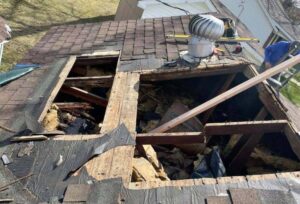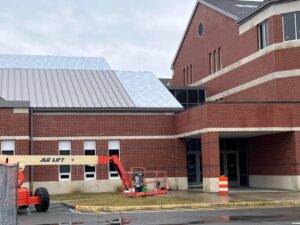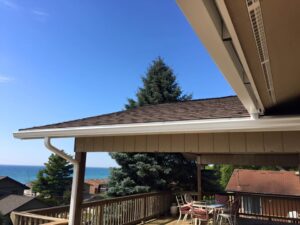Installing a new roof is a significant investment for any property owner, whether residential or commercial. A well-installed roof enhances the property’s aesthetics, provides essential protection against the elements, and contributes to the overall structural integrity of the building. However, before embarking on a roofing project, it is crucial to navigate the complex landscape of building codes and permits. Understanding these regulations ensures that your roof installation is compliant with local laws, safe, and built to last.
Understanding Building Codes
Building codes are a set of regulations established by local, state, and national authorities to ensure the safety, health, and general welfare of the occupants of buildings. These codes cover various aspects of construction, including roofing, and are updated periodically to incorporate new technologies, materials, and safety practices.
1. Purpose of Building Codes
- Safety: Building codes are designed to ensure that structures are safe for occupants and the surrounding environment. They address issues such as structural integrity, fire resistance, and weather protection.
- Standardization: Codes provide a standardized approach to construction, ensuring consistency and quality across different projects.
- Health and Welfare: Building codes consider the health and well-being of occupants by addressing ventilation, insulation, and other factors that contribute to a healthy living environment.
2. Key Roofing Codes
When it comes to roof installation, specific building codes must be adhered to. These codes vary depending on the jurisdiction but generally cover the following areas:
- Materials: Regulations regarding the types of roofing materials that can be used, including fire resistance, durability, and suitability for the local climate.
- Slope and Drainage: Requirements for the slope of the roof to ensure proper drainage and prevent water accumulation.
- Ventilation: Standards for roof ventilation to prevent moisture buildup and maintain indoor air quality.
- Insulation: Insulation requirements to improve energy efficiency and comfort.
- Wind and Seismic Resistance: Specifications for wind and seismic resistance to ensure the roof can withstand local weather conditions and natural disasters.
The Importance of Permits
Permits are official approvals issued by local building authorities that allow you to proceed with construction or remodeling projects. Obtaining a permit ensures that your project complies with all relevant building codes and regulations.
1. Why Permits Are Necessary
- Legal Compliance: Permits are a legal requirement in most jurisdictions for roofing projects. Failure to obtain a permit can result in fines, legal action, and the need to undo completed work.
- Safety Assurance: The permit process includes plan reviews and inspections to ensure that the roofing project is safe and meets all code requirements.
- Insurance and Warranty: Many insurance policies and warranties require that work be performed with proper permits. Unpermitted work may void your coverage or warranty.
2. Types of Permits
Different types of permits may be required for a roofing project, including:
- Building Permit: Covers the general construction aspects of the roofing project.
- Electrical Permit: Required if the roofing project involves electrical work, such as installing solar panels.
- Plumbing Permit: Necessary if the roofing project affects plumbing systems, such as roof drainage or vents.
- Demolition Permit: Needed if the project involves removing an existing roof before installing a new one.
Steps to Navigate Building Codes and Permits
Navigating building codes and permits can be a complex process, but following a systematic approach can make it more manageable. Fortunately, our pals at Summit Edge Builders have provided us with the steps to navigate the codes and permits needed for your roof installation.
1. Research Local Codes and Regulations
Start by researching the building codes and regulations specific to your area. Local building departments or municipal websites often provide resources and information on roofing codes and permit requirements. Pay attention to:
- Specific materials and methods allowed or prohibited.
- Requirements for roof slope, drainage, and ventilation.
- Any unique local considerations, such as hurricane or earthquake resistance.
2. Consult with Professionals
Engage with roofing contractors, architects, or engineers who are familiar with local building codes and permit processes. These professionals can provide valuable guidance and ensure that your project plans comply with all relevant regulations.
- Roofing Contractors: Experienced contractors can help you understand the specific requirements for roofing materials, installation methods, and inspections.
- Architects and Engineers: These professionals can assist with designing a roof that meets code requirements and can provide the necessary documentation for permit applications.
3. Prepare and Submit Permit Applications
Once you have a clear understanding of the requirements, prepare your permit applications. This typically involves:
- Detailed Plans: Provide detailed plans and specifications for the roofing project, including materials, dimensions, and installation methods.
- Supporting Documents: Include any necessary supporting documents, such as engineering reports, material certifications, or energy efficiency calculations.
- Application Forms: Complete the required application forms provided by the local building department.
4. Pay Permit Fees
Permit applications often require payment of fees, which vary depending on the scope and scale of the project. Be prepared to pay these fees at the time of application submission.
5. Schedule Inspections
After the permit is issued, the project will typically require several inspections at different stages of the installation process. Common inspection points include:
- Pre-Installation Inspection: Ensures that the existing roof or structure is suitable for the new installation.
- Mid-Installation Inspection: Checks for compliance with codes and standards during the installation process.
- Final Inspection: Confirms that the completed roof meets all code requirements and is safe for occupancy.
6. Address Inspection Findings
If the inspector identifies any issues during the inspections, address them promptly. This may involve making corrections or adjustments to the work and scheduling a re-inspection.
7. Keep Records
Maintain thorough records of all permits, inspections, and any correspondence with the building department. These records can be valuable for future reference, especially if you sell the property or need to make additional improvements.
Common Challenges and How to Overcome Them
Navigating building codes and permits can present several challenges. Understanding these challenges and knowing how to address them can help ensure a smooth process.
1. Complex Regulations
Building codes can be complex and difficult to interpret, especially for those without a background in construction. To overcome this:
- Seek Professional Help: Consult with experienced contractors, architects, or engineers who can provide clear explanations and guidance.
- Use Online Resources: Many local building departments offer online resources, guides, and FAQs to help clarify code requirements.
2. Lengthy Approval Process
The permit approval process can be time-consuming, potentially delaying your project. To expedite the process:
- Plan Ahead: Start the permit application process early to account for potential delays.
- Follow-Up: Regularly follow up with the building department to check the status of your application and address any issues promptly.
3. Inspection Delays
Scheduling and completing inspections can sometimes lead to delays, especially in busy construction seasons. To manage this:
- Coordinate with Inspectors: Communicate clearly with inspectors and coordinate schedules to ensure timely inspections.
- Be Prepared: Ensure that all work is ready for inspection to avoid the need for re-inspections and further delays.
Conclusion
Navigating building codes and permits for roof installation is a crucial aspect of any roofing project. Compliance with these regulations ensures the safety, quality, and longevity of your roof while avoiding legal and financial complications. By understanding the importance of building codes, obtaining the necessary permits, and following a systematic approach, property owners can successfully manage their roofing projects. Engaging with experienced professionals and maintaining thorough records further contributes to a smooth and efficient process, resulting in a well-constructed and compliant roof.







